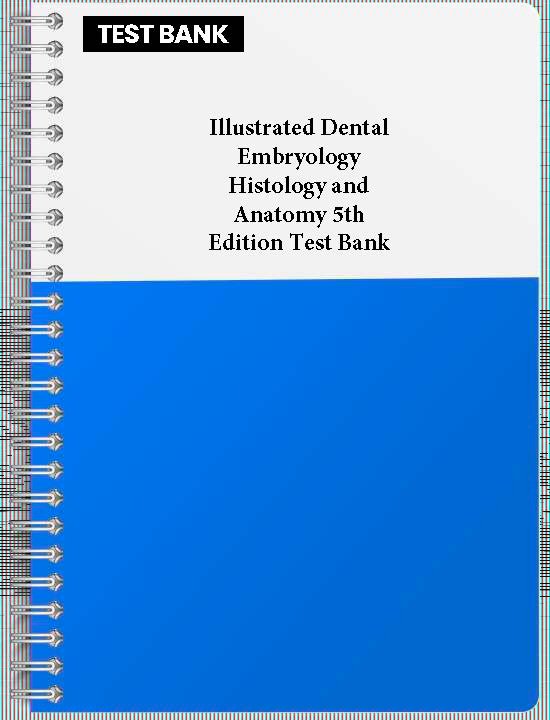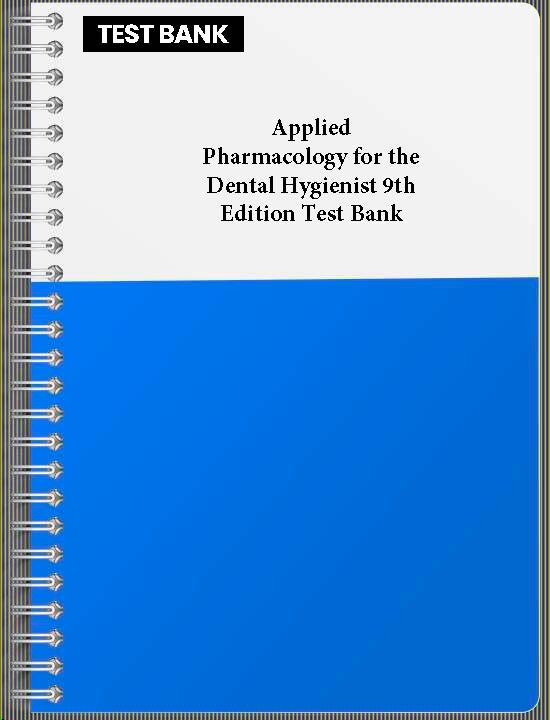Description
Dental Materials Clinical Applications for Dental Assistants and Dental Hygienists 5th Edition Test Bank is a valuable study tool for dental assisting and dental hygiene students. It covers essential knowledge on the properties, handling, and clinical applications of dental materials. Aligned with the textbook, this test bank emphasizes practical skills and foundational concepts necessary for safe and effective use of dental materials in clinical practice. Here’s an overview of the main areas covered:
- Introduction to Dental Materials: Questions cover the basics of dental materials, including terminology, classification, and the role of dental materials in preventive and restorative care. This section provides a foundation in understanding material properties and their significance in dentistry.
- Physical and Mechanical Properties of Dental Materials: Focuses on essential material properties such as hardness, strength, elasticity, and thermal conductivity. Questions assess knowledge of how these properties impact material performance and durability in the oral environment.
- Impression Materials: Covers various types of impression materials, such as alginate, polyvinyl siloxane, and polyether. Questions include selection criteria, handling techniques, and common issues in impression-taking for accurate dental molds.
- Gypsum Products: Includes questions on gypsum-based materials, such as plaster and stone, which are used for creating models and casts. Topics cover mixing, setting, and handling of these materials, as well as differences in properties between plaster types.
- Direct Restorative Materials: Focuses on materials like composite resins, amalgam, and glass ionomers. Questions test knowledge on indications, advantages, limitations, and proper techniques for placing and finishing these restorative materials.
- Indirect Restorative Materials: Includes topics on materials used for crowns, bridges, and other lab-fabricated restorations, such as ceramics and metal alloys. Questions cover indications, material properties, and considerations for cementation and longevity.
- Dental Cements: Covers the types and applications of dental cements, such as zinc phosphate, glass ionomer, resin, and polycarboxylate. Questions include appropriate use, mixing techniques, and handling for various restorative and orthodontic purposes.
- Preventive Materials: Focuses on materials used in preventive dentistry, such as fluoride treatments, sealants, and desensitizing agents. Questions emphasize the application process, indications, and benefits of these materials in caries prevention and sensitivity management.
- Polymers and Acrylics in Dentistry: Examines materials like acrylics and polymers used in dentures, impression trays, and other dental appliances. Topics include handling, setting, and potential applications for these versatile materials.
- Adhesion and Bonding: Covers the principles of adhesion and bonding, including enamel and dentin bonding systems. Questions assess understanding of bonding agents, preparation techniques, and factors that impact bond strength and longevity.
- Laboratory Safety and Infection Control: Focuses on safe handling and disposal of dental materials, personal protective equipment (PPE), and maintaining infection control protocols. Questions include OSHA standards and guidelines for ensuring a safe work environment.
- Implant Materials: Includes questions on materials used for dental implants, such as titanium and zirconia. Topics cover biocompatibility, osseointegration, and considerations for implant-supported restorations.
- Digital Dental Materials and Technologies: Focuses on advancements in digital dentistry, including CAD/CAM technology and 3D printing. Questions test knowledge of materials compatible with digital workflows and the advantages of digital processes in clinical practice.
- Clinical Application and Manipulation: Covers best practices for handling and manipulating dental materials in the clinical setting. This section includes topics like infection control during procedures, chairside techniques, and patient safety.
1. Introduction to Dental Materials
2. Oral Environment and Patient Considerations
3. Physical and Mechanical Properties of Dental Materials
4. General Handling and Safety of Dental Materials in the Dental Office
5. Impression Materials
6. Gypsum and Wax Products
7. Principles of Bonding
8. Composites
9. Glass Ionomers, Compomers, and Bioactive Materials
10. Dental Ceramics
11. Dental Amalgam
12. Metals and Alloys
13. Dental Implants
14. Polymers for Prosthetic Dentistry
15. Provisional Restorations
16. Dental Cement
17. Abrasion, Finishing, Polishing, and Cleaning
18. Preventive and Desensitizing Materials
19. Teeth Whitening Materials and Procedures
20. Preventive and Corrective Oral Appliances










Reviews
There are no reviews yet.